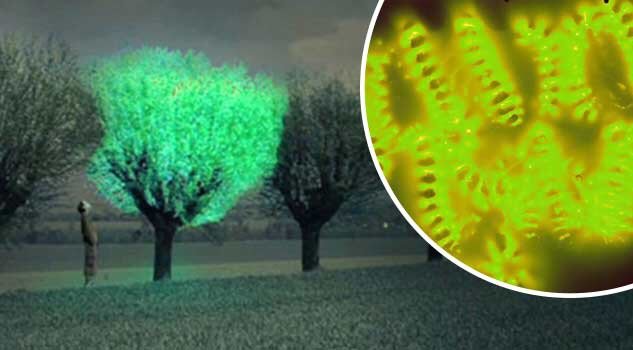Could “Glow in the Dark” Plants One Day Replace Street Lights?

Millions of people watched James Cameron’s epic Avatar and fell in love with its wondrous planet, a lush landscape of bioluminescent plantlife of every color of the rainbow (of course, millions hated the terrible dialogue, acting, and general plot but that’s another article). Well, researchers at MIT are attempting to make that a reality.
OK, MIT is not trying to create Pandora here on Earth, but they are attempting to tackle our dependency on artificial lighting with a novel solution: glow in the dark plants. Bioluminescence crops up quite a lot in nature – fireflies, glowworms, and phosphorescent plankton immediately spring to mind – but the researchers hope that this could be a first step in helping us reduce the use of electrical lights using plants, starting small, but with the possibility that one day trees, not street lamps, will light our cities.
“The vision is to make a plant that will function as a desk lamp – a lamp that you don’t have to plug in. The light is ultimately powered by the energy metabolism of the plant itself,” explained the study’s senior author, Michael Strano.
In fact, the researchers’ goal is for the engineered plants to perform many of the functions that electronic devices currently perform. Since artificial lighting accounts for around 20 percent of global energy consumption they decided this was an important area to focus on.
The technology, described in a paper in the journal Nano Letters, uses luciferase, the enzyme that makes fireflies glow. Although desktop lamps and low-level indoor lighting would be useful, it’s really outdoor lighting where this could make a huge difference.
“Plants can self-repair, they have their own energy, and they are already adapted to the outdoor environment,” Strano said. “We think this is an idea whose time has come. It’s a perfect problem for plant nanobionics.”
Could "Glow in the Dark" Plants One Day Replace Street Lights?
Using watercress plants, to begin with, the researchers managed to get the plants to emit light for around 45 minutes, which they then managed for up to 3.5 hours. Although these tiny watercress seedlings currently can only emit about one-thousandth of the light needed just to read by, the researchers are confident they can boost this and the “battery life” of light duration with further study.
The long-term goal is to develop the technology into a type of paint that can be sprayed onto the leaves of plants when they are seedlings, turning trees and other large plants into non-intrusive light sources – a one-off treatment that would last their lifetime.
Although this isn’t the first time scientists have created plants that emit light, this is so far the simplest method, and so perhaps brings us one step closer to making it a rather pretty and well-lit a reality.
By reference of this website:
http://weirdlystrange.com/2017/12/28/could-glow-in-the-dark-plants-one-day-replace-street-lights/
Posted using Partiko iOS
!cheetah ban
Plagiarism